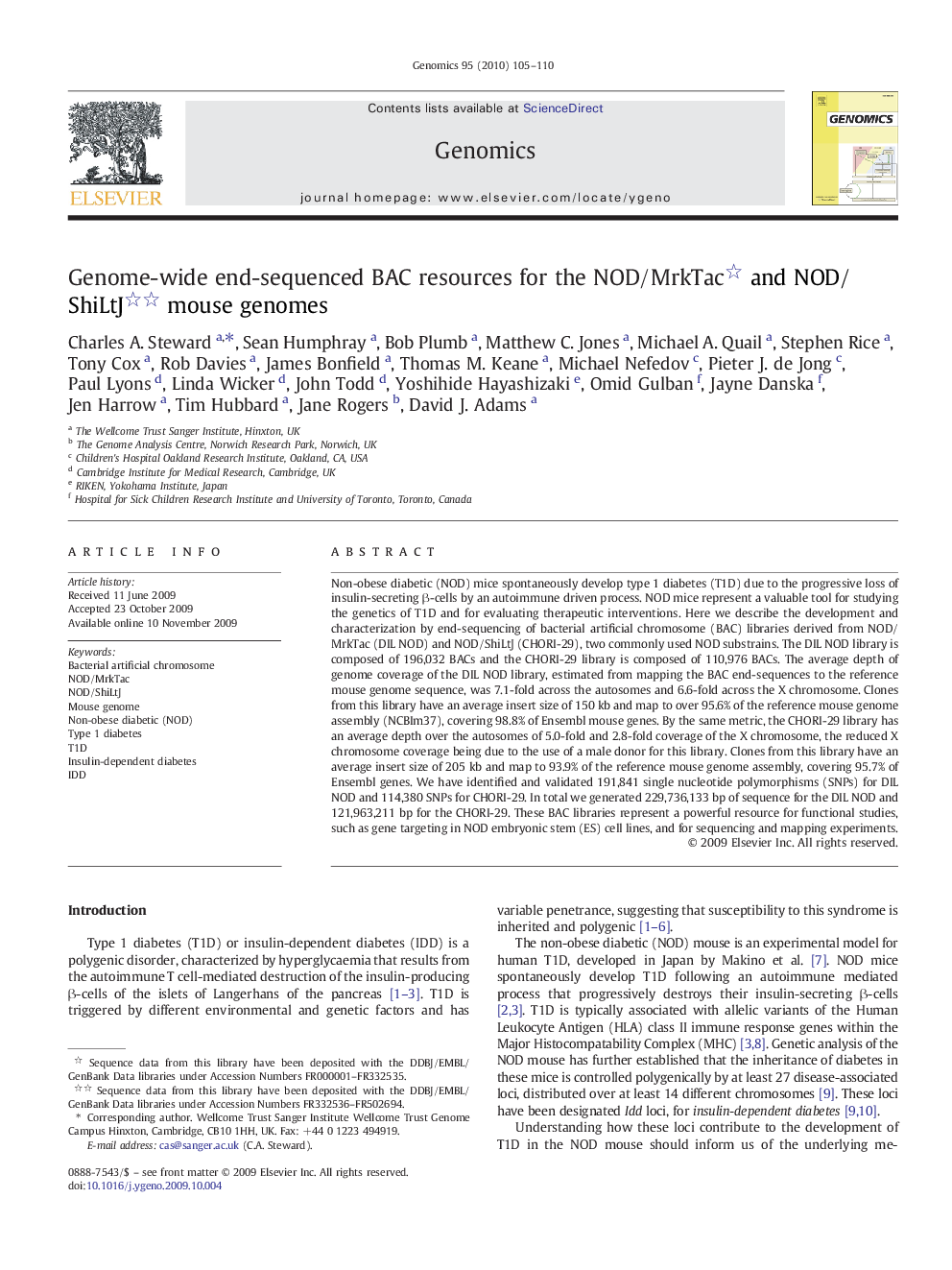| Article ID | Journal | Published Year | Pages | File Type |
|---|---|---|---|---|
| 5908008 | Genomics | 2010 | 6 Pages |
Abstract
Non-obese diabetic (NOD) mice spontaneously develop type 1 diabetes (T1D) due to the progressive loss of insulin-secreting β-cells by an autoimmune driven process. NOD mice represent a valuable tool for studying the genetics of T1D and for evaluating therapeutic interventions. Here we describe the development and characterization by end-sequencing of bacterial artificial chromosome (BAC) libraries derived from NOD/MrkTac (DIL NOD) and NOD/ShiLtJ (CHORI-29), two commonly used NOD substrains. The DIL NOD library is composed of 196,032 BACs and the CHORI-29 library is composed of 110,976 BACs. The average depth of genome coverage of the DIL NOD library, estimated from mapping the BAC end-sequences to the reference mouse genome sequence, was 7.1-fold across the autosomes and 6.6-fold across the X chromosome. Clones from this library have an average insert size of 150 kb and map to over 95.6% of the reference mouse genome assembly (NCBIm37), covering 98.8% of Ensembl mouse genes. By the same metric, the CHORI-29 library has an average depth over the autosomes of 5.0-fold and 2.8-fold coverage of the X chromosome, the reduced X chromosome coverage being due to the use of a male donor for this library. Clones from this library have an average insert size of 205 kb and map to 93.9% of the reference mouse genome assembly, covering 95.7% of Ensembl genes. We have identified and validated 191,841 single nucleotide polymorphisms (SNPs) for DIL NOD and 114,380 SNPs for CHORI-29. In total we generated 229,736,133 bp of sequence for the DIL NOD and 121,963,211 bp for the CHORI-29. These BAC libraries represent a powerful resource for functional studies, such as gene targeting in NOD embryonic stem (ES) cell lines, and for sequencing and mapping experiments.
Related Topics
Life Sciences
Biochemistry, Genetics and Molecular Biology
Genetics
Authors
Charles A. Steward, Sean Humphray, Bob Plumb, Matthew C. Jones, Michael A. Quail, Stephen Rice, Tony Cox, Rob Davies, James Bonfield, Thomas M. Keane, Michael Nefedov, Pieter J. de Jong, Paul Lyons, Linda Wicker, John Todd, Yoshihide Hayashizaki,
